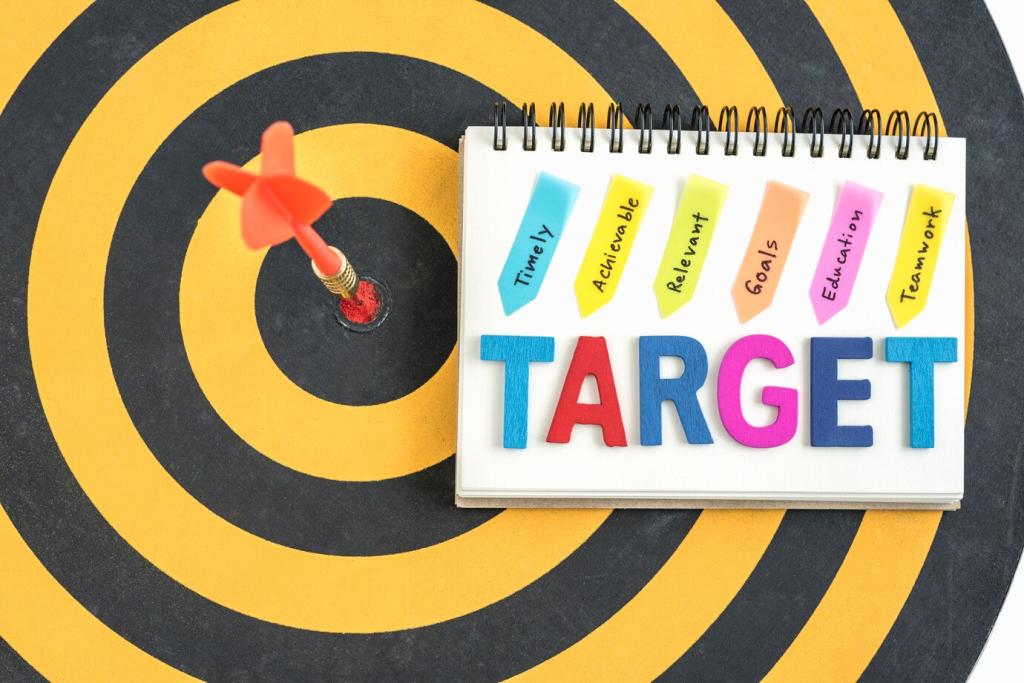
Overcoming Obstacles in Goal Pursuit
Pursuing meaningful goals is an essential part of personal and professional growth, but encountering obstacles along the way is inevitable. Whether you are striving to advance your career, improve your health, or achieve a long-held dream, the path to success is rarely straightforward. Understanding how to navigate setbacks, adapt your strategies, and maintain motivation is crucial for overcoming the challenges that arise during goal pursuit. This page explores key approaches to facing obstacles head-on and provides practical insights to help you stay resilient, focused, and committed to achieving your ambitions.
Understanding Common Obstacles in Goal Achievement

Self-doubt is a common internal obstacle that can severely limit your ability to take action towards your goals. When you lack confidence in your abilities, you may hesitate to start new projects, procrastinate tasks, or give up more easily when faced with challenges. This mental barrier often feeds on past failures, societal expectations, or negative feedback from others. Overcoming self-doubt involves cultivating self-awareness, identifying the sources of your uncertainty, and gradually building self-confidence through small, consistent victories. Developing a growth mindset and focusing on your strengths can also help, transforming self-doubt from a roadblock into a stepping stone for growth.
Developing a Growth Mindset
A growth mindset is the belief that your abilities and intelligence can be developed through effort, learning, and perseverance. Embracing this mindset allows you to view obstacles as opportunities for growth instead of insurmountable barriers. When faced with challenges, a growth mindset encourages you to seek feedback, learn from mistakes, and persist despite difficulties. This shift in perspective not only builds resilience but also powers innovation and creativity in finding new solutions. By intentionally practicing self-reflection and positive self-talk, you can strengthen your growth mindset and approach each challenge with renewed determination.
Practicing Emotional Regulation
Goal pursuit can trigger a wide range of emotions, from excitement and hope to frustration, anxiety, and disappointment. Developing emotional regulation skills helps you respond to these feelings constructively rather than react impulsively. Techniques such as mindfulness meditation, journaling, or deep breathing can provide space to process emotions and gain perspective. By managing your reactions, you create a calmer internal environment that enables better decision-making and problem-solving. Over time, emotional regulation becomes a cornerstone of resilience, allowing you to face obstacles with clarity and composure rather than being derailed by stress or negativity.
Harnessing the Power of Support Networks
No journey towards a significant goal happens in isolation. Building and maintaining a strong support network can bolster your resilience, providing reassurance, advice, and encouragement when you need it most. Friends, family, mentors, or professional communities can offer valuable perspectives and cheer you on during tough times. Sharing your experiences and challenges not only lightens your emotional load but can also yield practical solutions or new ideas you hadn’t considered. Proactively seeking out support, and being willing to both give and receive help, reinforces your ability to cope with setbacks and stay committed when the going gets tough.

Strategic Planning to Navigate Obstacles
Setting Realistic and Flexible Goals
Setting goals that are both ambitious and realistic lays the foundation for lasting achievement. Unrealistic expectations can quickly lead to frustration and burnout, especially when obstacles arise. By breaking down large goals into smaller, achievable milestones, you build momentum and allow for regular assessment of your progress. Flexibility is equally important—being willing to adjust your goals in response to new information or changing circumstances ensures you stay on course, even when the original plan no longer makes sense. Continually reviewing and refining your goals keeps them relevant, maintaining your motivation and increasing your overall chance of success.
Identifying Potential Barriers in Advance
One of the most effective ways to overcome obstacles is to anticipate them before they occur. By conducting a candid self-assessment and considering your environment, resources, and the potential challenges you may face, you can create contingency plans and minimize the impact of setbacks. Whether it’s acknowledging time constraints, skill gaps, or external risks, proactive problem-solving helps you prepare for the unexpected. This level of forethought not only reduces anxiety but also increases your confidence in handling whatever comes your way, making obstacles feel less overwhelming and more manageable.
Prioritizing Actions and Managing Resources
Strategic planning involves careful prioritization of actions to ensure that your time, energy, and resources are focused on what truly matters. When obstacles threaten to derail progress, having a clear sense of priorities allows you to adjust your plans without losing sight of your ultimate objectives. Resource management—be it time, finances, or support—is critical to navigating challenges efficiently. Regularly evaluating where your efforts are best directed ensures that you are always moving forward, even if at a slower pace, and prevents the feeling of being stuck or overwhelmed by competing demands.
